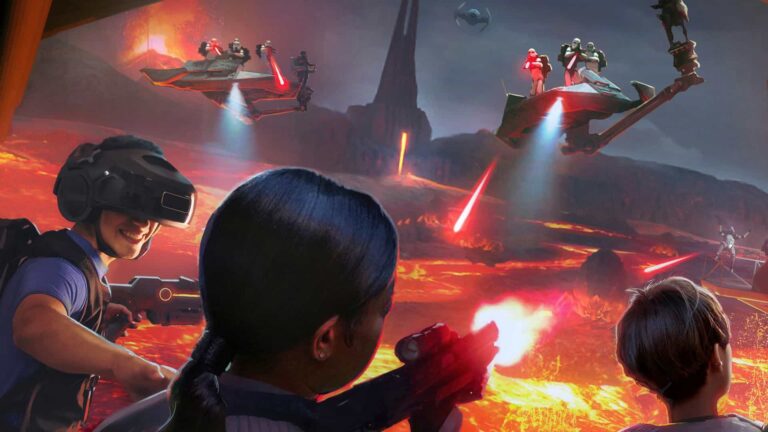
Curtis Hickman, co-founder of the VOID and its Chief Creative Officer, has written a new book, Hyper-Reality, The Art of Designing Impossible Experiences. The subject of this voluminous textbook is the art of illusion, and how magic, whether by hand or headset, is at the core of the sleight of hand that enabled The VOID to deliver something few can: free-roam VR, which is the only true, untethered (guests wore a backpack PC), fully embodied experience of being in another place.
The first story I wrote for Forbes seven years ago was For a True Virtual Reality Experience, Who You Gonna Call? about my visit to the VOID’s premiere mixed reality experience, Ghostbusters, at Madame Tussauds Wax Museum in Times Square. “I am counting on this weird, expensive journey to restore my faith in VR,” I wrote.
The creators of the VOID raised well over $20 million, but they made some critical business mistakes, which had nothing to do with the quality of the free-roam VR experiences Hickman and his collaborators created, and everything to do with the realities of retail entertainment. Unlike a movie theater, the VOID didn’t have the capacity to make up for low weekday traffic on the weekend. High operating costs, and the realities of throughput and utilization, ultimately made the enterprise unsustainable.
“In 2020, The VOID closed its doors.” Wrote Hickman on Linkedin when Hyper-Reality was released a few weeks ago. “It was a hard and stressful time. All at once everything we worked for vanished. I remember telling my kids (for the first time in their lives) I was looking for a new job. I knew I would miss The VOID team. They were both talented and wonderful – and would move on to do other amazing things. I supposed I would too, but what about everything we learned? Would it just fade away? I hated that idea. So, during the pandemic, I started to write a book. A book that teaches hyper-reality.”
In Hyper-Reality: The Art of Designing Impossible Experiences, Hickman shares how he built virtual worlds and then guided guests through the stories he wanted them to experience there. Unlike a movie, there’s no director, no cuts or camera moves to manipulate time or perspective. The user is the hero and has free agency. Or so they think. Therein lies Hickman’s magic. He even learned how to slip some scoring into the background. In case you forget you’re inside a movie.
The fact that Hickman is indeed a professional magician, a real one, should be a surprise to exactly no one who has experienced his work at the VOID. The secrets he reveals – how you can create immersive illusions like levitations by deploying misdirection and redirection – are a book within the book. Hickman’s explanations of how he bends reality are deeply insightful and apply to much more than experience design.
One of the other highlights of the book is Hickman’s description of Jumanji: Reverse of the Curse, the VR experience the VOID created with Sony Pictures. “There are moments, several long moments in fact, where you forget you aren’t in Jumanji. As silly as it sounds, for those moments, the real world vanishes as your brain subconsciously says ‘I am in Jumangi – this is my reality now.’ Your mind accepts that this alternate and impossible reality is reality,” writes Hickman.
Experience design is the art of using ancient arts like theater and magic, sometimes with new technology, like VR, to make the guest the hero of the story.
In a world where few practitioners take the time to share their secrets, Hickman’s book is especially welcome – and useful. I bought copies for colleagues. Mine is already dog-eared and highlighted. My graduate students, and everyone involved with experience design, are going to benefit from Hickman’s detailed textbook on creating mixed-reality experiences.
 Charlie Fink is the author of the AR-enabled books “Metaverse,” (2017) and “Convergence” (2019). In the early 90s, Fink was EVP & COO of VR pioneer Virtual World Entertainment. He teaches at Chapman University in Orange, CA.
Charlie Fink is the author of the AR-enabled books “Metaverse,” (2017) and “Convergence” (2019). In the early 90s, Fink was EVP & COO of VR pioneer Virtual World Entertainment. He teaches at Chapman University in Orange, CA.
Header Image Credit: The Void






